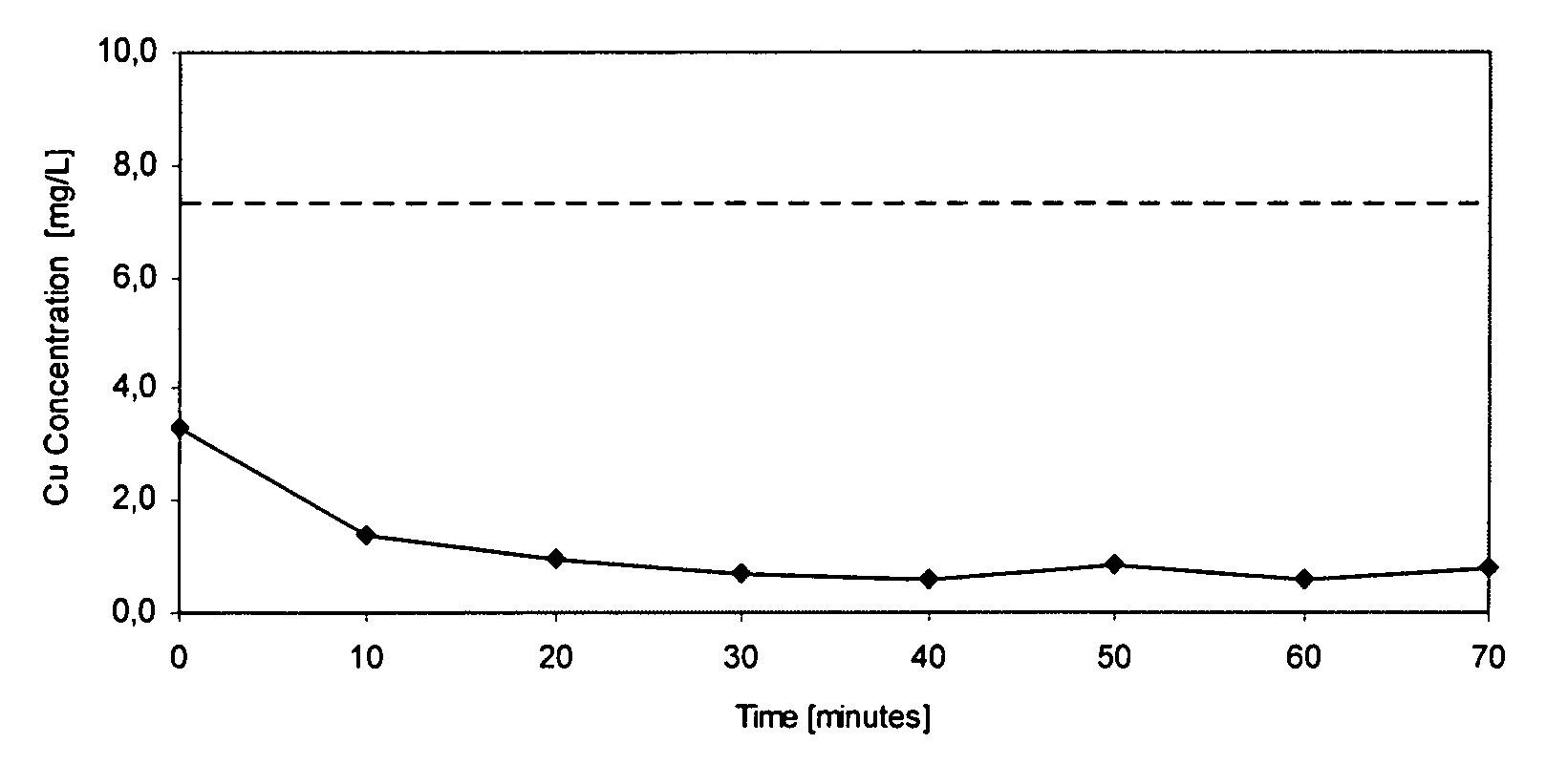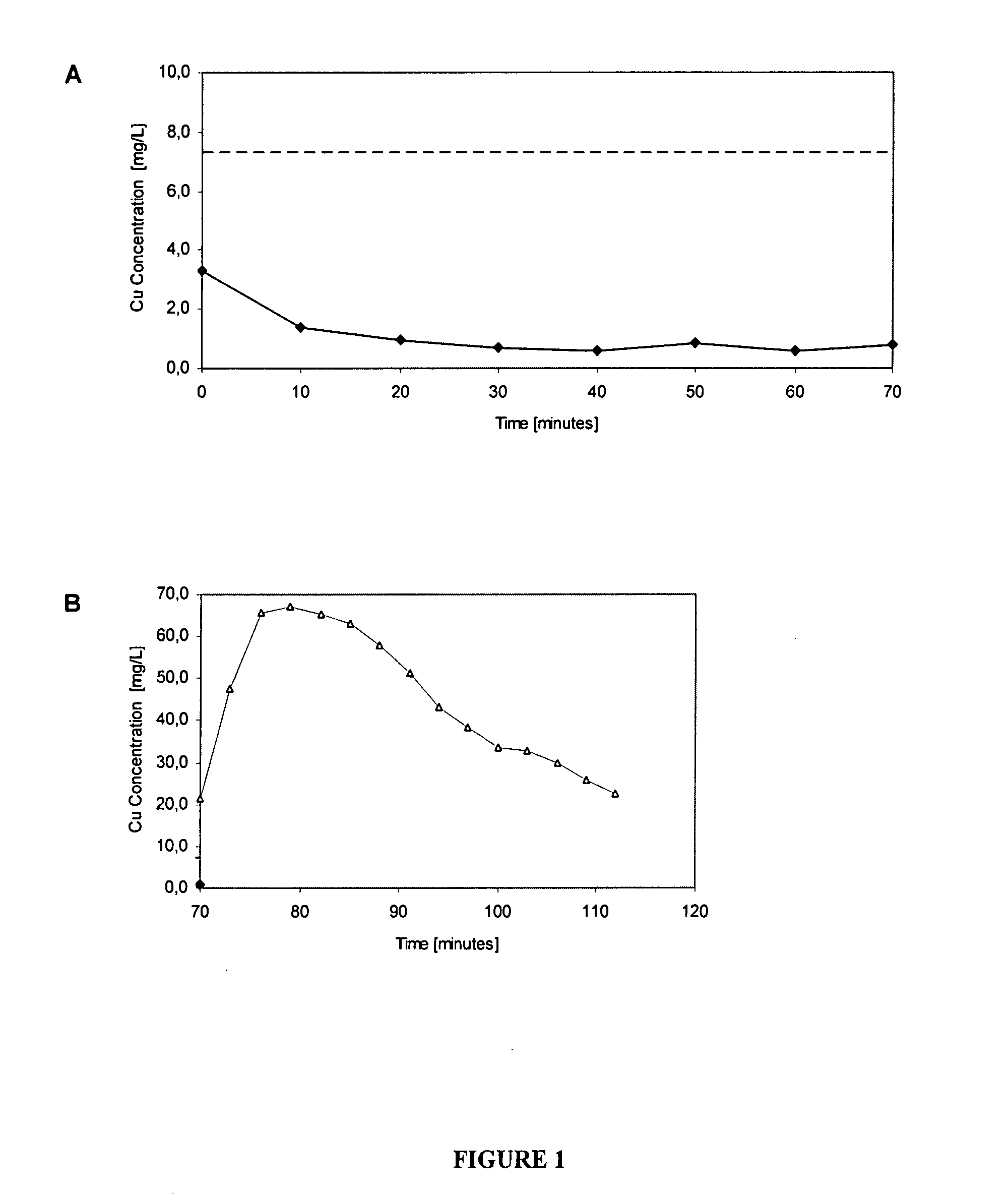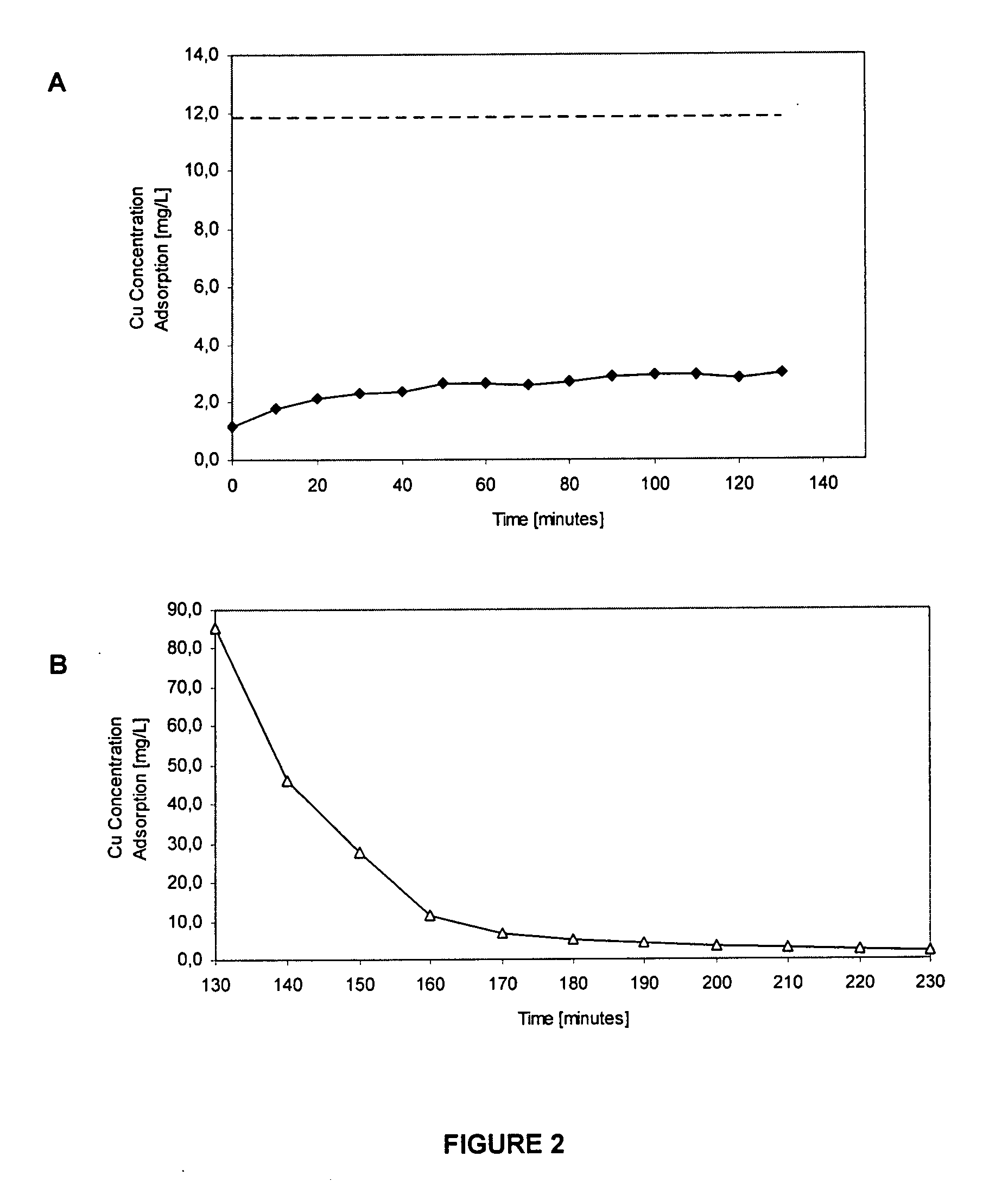Bacterial strain for a metal biosorption process
a biosorption process and bacteria technology, applied in the field of bacteria strain for a metal biosorption process, can solve the problems of high energy cost, high energy cost, and high cost of both processes, and achieve the effects of low stability, high cost, and high energy cos
- Summary
- Abstract
- Description
- Claims
- Application Information
AI Technical Summary
Benefits of technology
Problems solved by technology
Method used
Image
Examples
example 1
Preparation of Aggregated Vegetative Cells of Strain of Bacillus Sp. NRRL-B-30881 in Erlenmeyer Flasks
[0066]In nine 250 mL Erlenmeyer flasks, 90 mL of culture medium N° 1 (indicated in Table 1) were prepared. These flasks were sterilized in autoclave at 121° C. for 15 minutes. Separately, 10 mL of different glucose solutions (1, 2, 3, 4, 5, 6, 8, and 10% w / v) were prepared. They were sterilized in autoclave at 121° C. for 15 minutes. Then, when cold, glucose was added to the Erlenmeyer flasks, which contain the culture medium N° 1 (from which the following final concentrations of glucose were obtained: 0, 1, 2, 3, 4, 5, 6, 8 y 10 g / L). Later, the different flasks were inoculated with strain of Bacillus sp. NRRL-B-30881, which was kept in slant agar tubes in a tryptic soy agar solid medium, and then was grown in an orbital stirrer at 28° C. and 150 rpm for 24 hours.
TABLE 1Composition of culture medium N° 1 for strain ofBacillus sp. NRRL-B-30881ComponentConcentrationNa2HPO4•2H2O1.393g...
example 2
Preparation of a Sporulated Inoculant of Strain of Bacillus Sp. NRRL-B-30881 in a 20 L Bioreactor
[0071]A 20 L bioreactor (Braun Biotech International model Biostat ED, Germany) provided of a digital control system (DCU) was employed to prepare a sporulated inoculant strain of Bacillus sp. NRRL-B-30881. This bioreactor provides an automatic performance (acquiring information, sensors calibrating, sequential control). To measure temperature, pH, and dissolved oxygen in the culture, a probe of temperature and electrodes of pH and oxygen were employed. Inside, the bioreactor was made of stainless steel and its tank has a volume of 20 L. The capacity for culture was 15 L. The tank has a jacketed heat exchanger, four baffles, and three six-bladed flat disc impellers of 8.5 cm diameter.
[0072]Bioreactor inoculation was performed from a culture of strain of Bacillus sp. NRRL-B-30881 (pre-culture) in 100 mL of culture medium N° 2 (Table 3).
TABLE 3Composition of the culture medium N° 2 for str...
example 3
Metals Biosorption by a Biofilm of Strain of Bacillus Sp. NRRL-B-30881 in a Fixed Bed Bioreactor
[0081]To perform a metals biosorption by a biofilm of strain of Bacillus sp. NRRL-B-30881, a fixed-bed bioreactor with a 90 L-total-capacity, using polyvinyl chloride (PVC) as material, was employed. The central structure was constituted by a type 6 piping, 315 mm nominal diameter and 1.3 m longitude PVC. The lids were PVC collector lids for 315 mm tubes, which were provided of a 12.7 mm tank outlet. To provide oxygen, a Bayer type injector was employed. This injector was constituted by the injector, made of polypropylene, and an acrylic casing. In order to keep the temperature constant at 28° C. inside the bioreactor, a heat interchange system was employed; this system consisted of a coil immersed in a water bath, which was thermo-regulated by a heater HAAKE model DC3 and a solenoid valve that controlled the inlet of cooling water, which was automatically guided by a control interface OP...
PUM
| Property | Measurement | Unit |
|---|---|---|
| concentration | aaaaa | aaaaa |
| concentration | aaaaa | aaaaa |
| temperature | aaaaa | aaaaa |
Abstract
Description
Claims
Application Information
 Login to View More
Login to View More - R&D
- Intellectual Property
- Life Sciences
- Materials
- Tech Scout
- Unparalleled Data Quality
- Higher Quality Content
- 60% Fewer Hallucinations
Browse by: Latest US Patents, China's latest patents, Technical Efficacy Thesaurus, Application Domain, Technology Topic, Popular Technical Reports.
© 2025 PatSnap. All rights reserved.Legal|Privacy policy|Modern Slavery Act Transparency Statement|Sitemap|About US| Contact US: help@patsnap.com



